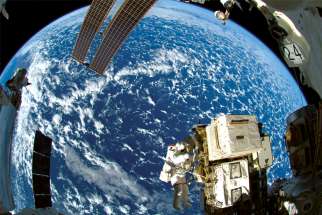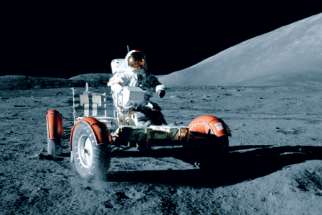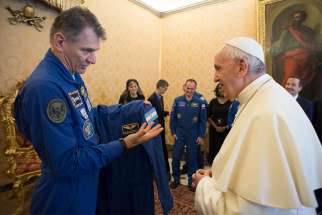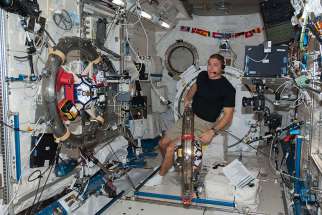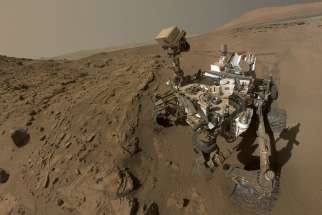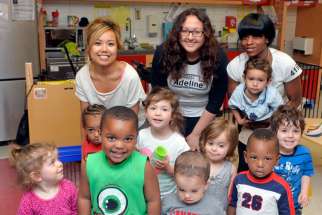What we learn of the universe leads us to God
The universe is beautiful and we’ve got pictures to prove it. Come May, when the James Webb Space Telescope starts downloading deep space photos, we’re going to have even more pictures, and astrophysicist and cosmologist Fr. Adam Hincks just knows those pictures will be beautiful too.
The Register Archive: Church can still bask in the moonlight
Canada’s David Saint-Jacques joined the exclusive club of space explorers when he blasted off to the International Space Station on Dec. 3, almost 46 years after NASA ended the Apollo program that put men on the moon. On Dec. 19, 1972, the last Apollo mission ended with the splashdown of the Apollo 17 capsule. It was an historic achievement, though by this time — after five previous moon landings in three years — the excitement of moon landings was waning. The last moon mission, however, held a deeper meaning for Fr. Harold O’Neill, who was a professor of dogmatic theology at St. Augustine’s Seminary in Toronto. At the time he wrote this for The Register, he was studying at the University of Regensburg in West Germany, where he drew inspiration from a lecture by Professor Joseph Ratzinger, who later became Pope Benedict XVI.
WASHINGTON - On the International Space Station there's a place, while filled with robotic equipment, where astronauts like to hang out. Called the Cupola, the small module has seven large bay windows that give crew members a panoramic view of Earth.
Vatican urges UN to seek equitable sharing of space technology
UNITED NATIONS - The information and services that space technology provides must be shared as much as possible by the countries of the world to reduce the risk that economic and social inequalities will widen, a Vatican official told the United Nations.
Ontario daycares receives a $120 million boost
Good news for parents with young children in Ontario — the Ministry of Education plans to spend $120 million to increase day care spaces in the province.
CASTEL GANDOLFO, Italy - It looked like a mini-United Nations, but the attendees were wearing shorts and T-shirts and, over coffee, they talked about the birth of star clusters rather than a ban on cluster bombs. Also, the location wasn't Manhattan or Geneva, but a refurbished monastery immersed in the papal gardens behind the pope's summer villa south of Rome.
The 25 young men and women from 23 different countries were future astronomers and astrophysicists brought together by the Vatican Observatory to spend the month of June discussing "The Formation and Evolution of Stellar Clusters," which are groups of stars populating the galaxies.


